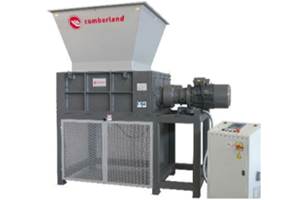Q) What is quality regrind?
A) Quality regrind may look different for different applications. But, a good rule of thumb is looking for consistent, uniform granulate size with minimal sharps and low dust. Material density will dictate if the regrind is a flake or granulate. Whereas screen size may dictate the particle size, the end goal is to reclaim as much quality, useable regrind to minimize additional virgin material and recycle back into the process and mitigate waste.
Q) How many rotor knives should I use and why?
A) This typically depends on the size and density of the parts. The goal is to use enough knives to maximize throughput without sacrificing part ingestion into the cutting area. More knives means more cuts per minute, however, there are diminishing returns after a certain threshold where parts/material will bounce around in the chamber rather then allowing the knives to “bite” on the downstroke.
Q) What determines how many bed knives to use?
A) Generally, the material characteristics and throughput requirements will dictate how many knives to use and in what configuration.
Q) When to use water-cooled rotor?
A) Used in high temperature applications, a water-cooled rotor protects the bearings from overheating. Heat isn't allowed to build up in the chamber, which helps to create a heat sink.
Q) What is the purpose of a rotor flywheel?
A) Rotor flywheels add additional inertia into the cutting system. Therefore it helps conserve energy by requiring less horsepower in the cutting system.
Q) What is a cross-cutting rotor?
A) Both rotor and bed knives have an equal and opposite slant angle in a cross-cutting rotor. As the rotor knife moves down with respect to the bed knife, two scissors cutting action points converge towards the center. There is a uniform knife gap across the entire knife. This configuration provides an improved bite on the process material, lower power requirements, lower noise levels, and a balanced load on the rotor bearings.
Q) Tangential, Offset or Straight Drop Chamber?
A) Tangential allows processing larger parts through a smaller machine. A three-blade rotor compliments the tangential geometry for large part ingestion. Offset is intended for thicker walled parts and long profile extrusions. A straight drop chamber used in applications where parts have heavier cross sections because it minimizes the “bite.” There is also a combination chamber that allows for better ingestion while limiting bite.

Q) When to use a screenless grinder?
A) Screenless granulators are ideal for sprue pieces, runners and small parts where low noise and low dust are desirable. They are low rpm systems and easy to move around with the goal of reclaiming more regrind for reuse back into the process.
Q) Do I need a shredder before my granulator?
A) The shredder phase helps to protect the granulator by reducing the load during regrind once it is pre-shredded. It is best to use a shredder for heavy duty materials at a high volume. Shredder type may vary depending on the material type (e.g. single-shaft vs. multi-shaft). Most shredders can be used inline for continuous shredding.
Q) How do I increase the longevity of my Size Reduction equipment?
A) Keeping you granulators and shredders maintained is very important. Be sure to regularly sharpen and replace knives when necessary. Dull knives produce less quality regrind and increase vibrations, which may cause more frequent maintenance. Check out "Service Tips" for more suggestions.



